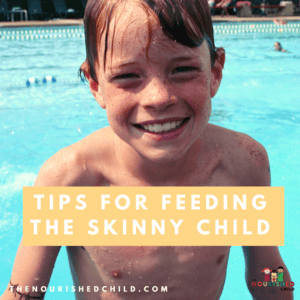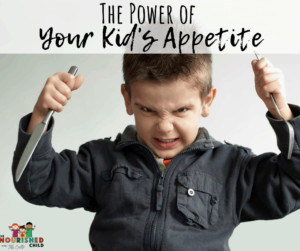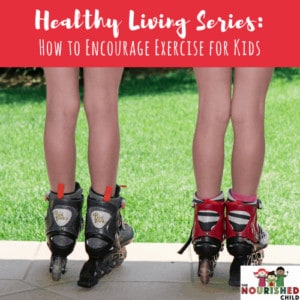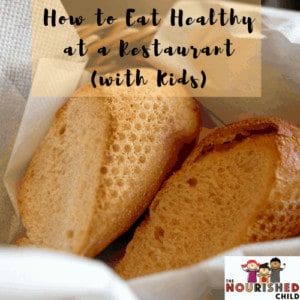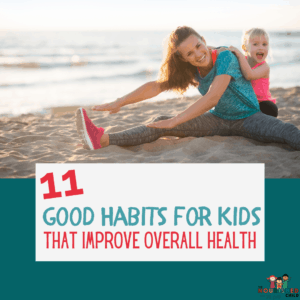Real Hunger vs Head Hunger: How to Navigate Eating in Kids
May 6, 2024
Is it real hunger? Or head hunger? Feeding kids and navigating their eating is hard, but it’s even harder when you can’t tell if they’re really hungry or not!
When kids are ‘hungry all the time’ it can be hard to tell if they’re really hungry or not. There’s a difference between hunger cues that result in hunger pangs, and food cravings that make a child think they’re hungry.
As a pediatric dietitian, I’ve seen this movie before. Many families are trying to navigate requests for food and help their children eat when it’s appropriate and avoid overfeeding.
In this article, I’ll review how to differentiate the two common types of hunger in kids: the physical need to eat versus emotional hunger or boredom (what I call ‘head’ hunger). I’ll describe a way to discern both, so that your child avoids overeating.
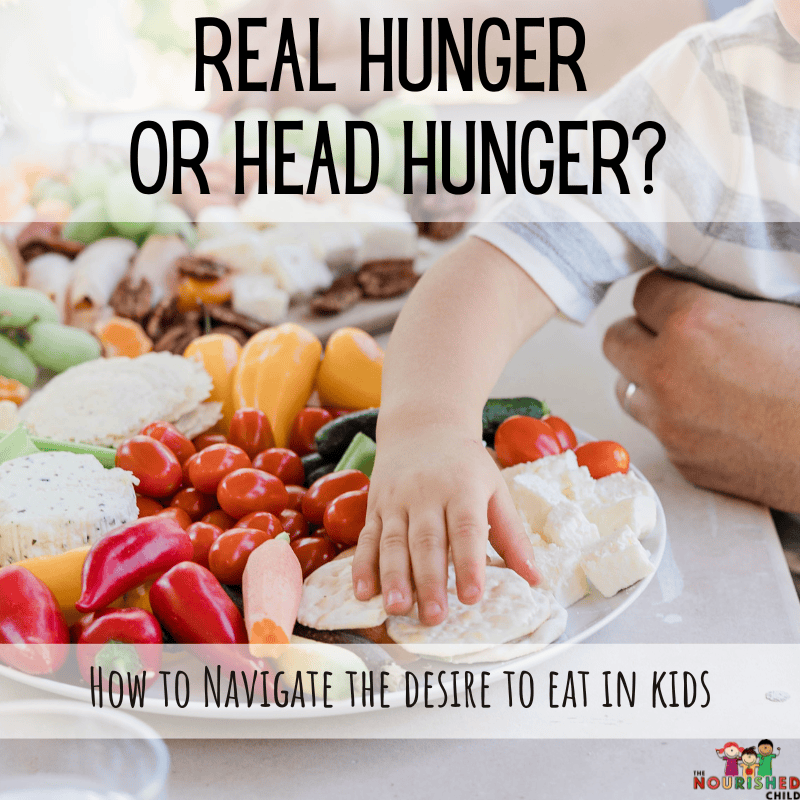
The Basics of Physical Hunger
Hunger is a biological process in the body. True hunger is purposeful, keeping our bodies functioning properly and providing the energy it needs.
When we eat and how much we eat is regulated by a complex system of appetite hormones, the nutrients in food, and genetic traits present within us that prompt eating. This biological system makes sure your child matches their body’s needs with enough nutrients and energy so they grow and develop well.
Physical hunger is prompted by a hormone called ghrelin. This hormone is present in the stomach. When your child’s belly is empty, ghrelin tells the brain it’s time to eat. Your child may experience hunger with the classic signs, including a growling tummy (or stomach hunger), headache, tiredness, agitation, or impatience.
The symptoms of hunger vary from child to child, but you probably have a pretty good idea about your child’s true signs of actual hunger. When your child experiences these symptoms, they will want to eat.
As they eat, a different hormone, called leptin, tells the brain the belly is filling up. Leptin triggers fullness cues. When your child is satisfied or full, leptin from fat cells tells the brain that it’s time to stop eating.
The biological cycle of ‘hunger – eat – satisfied’ happens repeatedly throughout the day. For children, this happens approximately every three to four hours.
(In toddlers, this cycle happens more frequently, every two to three hours; in teens, less frequently, every three to five hours.)
When we serve meals and snacks in intervals that mimic the appetite cycle, your child will be more likely to come to the table with true hunger.
If your child just had a meal or a snack, they will not have physical hunger. It’s not physiologically possible. Simply said, when the belly has food in it, or is full, the hunger hormones don’t fire.
When Kids Eat Poorly at Mealtime
Some children will experience hunger earlier than the above time frames when they don’t eat enough at mealtime or they don’t eat foods with filling nutrients like protein and fiber. You can easily figure this out by looking at the balance of foods, and the timing of when your child ate last.
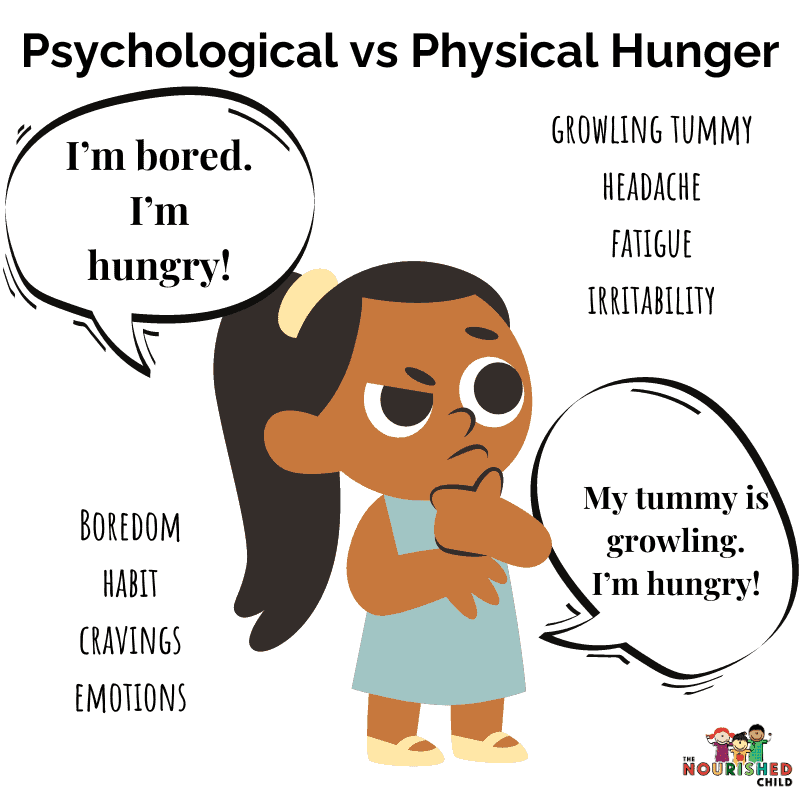
The Reasons for Head Hunger
When a child says they’re hungry after they’ve just eaten, this is what I call ‘head hunger,’ or psychological hunger. It’s when a child thinks they’re hungry, but they’re not experiencing true physical hunger. There are a few things that can be going on in this situation. Let’s review.
Boredom
Some kids, when bored, will turn to food and eat. Boredom is the most common reason children say they’re hungry when they’re not experiencing physical signs of hunger.
Eating when bored can lead to unhealthy eating habits, such as mindless eating, and this can lead to excessive eating, or not paying attention to food intake, like what and how much is eaten.
Emotional Eating
The second type of head hunger is emotional eating. Some kids will eat in response to emotional triggers and uncomfortable emotions, such as loneliness, sadness, or anger.
Food may provide comfort in these situations, hence the term “comfort food.” Although eating to soften uncomfortable feelings or emotions isn’t necessarily a bad thing, when it becomes a habit, it can become unhealthy.
Food Responsiveness
Food responsiveness is a genetic trait or tendency which highlights greater interest in food or being more responsive to external cues like the taste, smell, or appearance of food.
When a child has an enjoyable memory of eating a particular food, they can be triggered by that food or develop intense cravings for that specific food when they encounter it again.
Kids who are food responsive really do like to eat. They’re interested in food and everything about it, such as talking about it, preparing it, cooking it, and planning for future eating.
Children who are food responsive are more vulnerable to environments where there is abundant food. They often don’t have good self-control over what they eat or how much they eat.
How to Tell the Difference Between Physical Hunger and a Psychological Craving or an Emotional Need
The goal is to raise kids who are intuitive around food and employ mindful eating, paying attention to their internal signals of hunger and fullness so they are better able to self-regulate how much they eat and what they eat.
How can you tell if your child has real hunger? How can you differentiate between true hunger signals and an emotional type of hunger? I’ve got three steps that will help you discern the difference:
Look at the Timing of the Last Meal or Snack
When did your child eat last? If they ate less than three hours ago, it’s unlikely they are experiencing true hunger.
If your child ate three or more hours ago, they may have an empty stomach and be really hungry. You’ll want to offer the next meal or the next snack. If that timing is way off, you might ask if your child would like a piece of fruit (or other nutritious item) to help them get to the next meal or snack.
What Did Your Child Eat?
Think about the type of food your child actually ate at snack time or at meal time. If they had a good meal or snack with nutritious foods that were filling and satisfying, it’s probably not true hunger.
If they picked at their meal or they filled up on minimally nutritious foods (aka “junk” foods), then they may be really hungry. It’s possible they didn’t get the nutrition they really needed to keep them satisfied for that three hour block of time.
What do you do in that situation? You could offer a nutritious snack, or, you could have them hold off until the next scheduled snack or meal.
It is up to you.
However, this situation presents a teachable moment for your child.
When kids have to wait for a meal or snack, they often learn they need to eat when you serve meals and snacks. On the other hand, if you offer a snack or a “rescue meal,” your child may learn if they graze or whine for snacks, they’ll still get something to eat. Unfortunately, this can turn into a habit.
You get to decide which path you want to take. There’s no right or wrong answer.
I embraced the teachable moment with my kids, encouraging them to ‘own their decision.’ If they decided not to eat anything at lunch, then that was their decision, and they waited until the next snack or meal time. (I always did my part and offered meals and snacks at regular times.)
I may have said something like, “I know it’s uncomfortable, but every time you make a decision, there are consequences. And this is the consequence when you eat poorly or are too distracted to eat at meals. We’re going to stay on our eating schedule, which means you’re going to have to wait. Maybe next time you’ll make a different decision.”
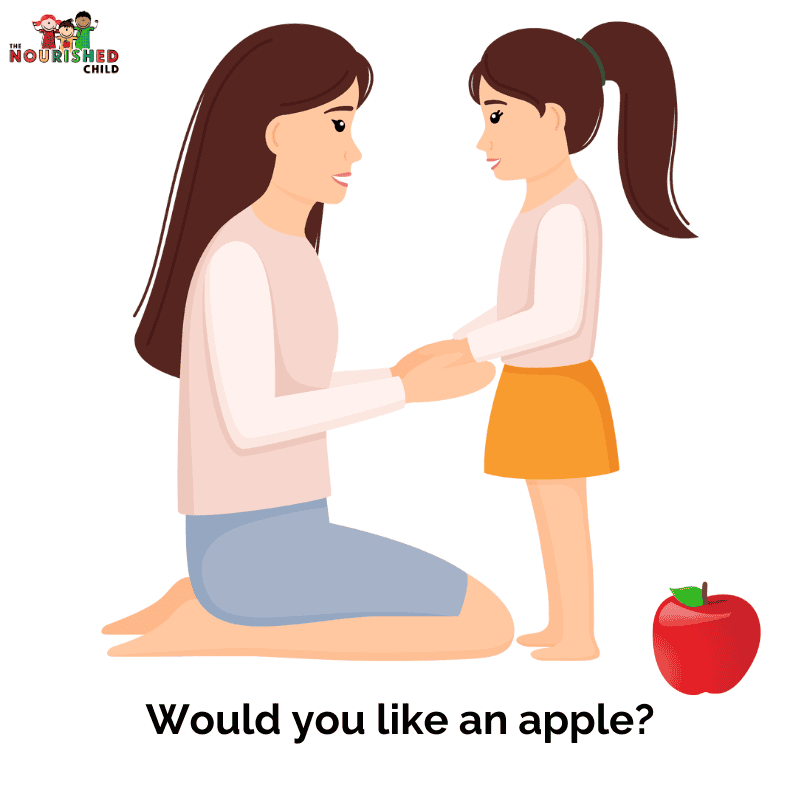
Ask This Defining, Yet Simple Question
If your child keeps badgering you for food, here is the third thing you can do. Ask them this: “Would you like an apple?”
Asking this question is a great way to discern whether your child is really hungry or just thinks they’re hungry. A child will typically respond in one of two ways:
They’ll say “Yes, an apple sounds great!” In that case, you know hunger is a real feeling. And, bonus! They’re adding nutrition to their day by eating an apple.
If they say, “I don’t want an apple, I want a granola bar!” then you know they’re not truly hungry. The hunger they’re experiencing is more likely an emotional reaction, boredom, or a habit of eating mindlessly. In other words, ‘head hunger.’
Overall, we want our kids to eat mostly for physical hunger. It’s okay to eat out of boredom occasionally. Food can fill a role in those situations. But it’s when those eating behaviors become habits that we can run into trouble with appetite awareness and eating regulation.
Want to listen to this topic on my podcast? Click here.



